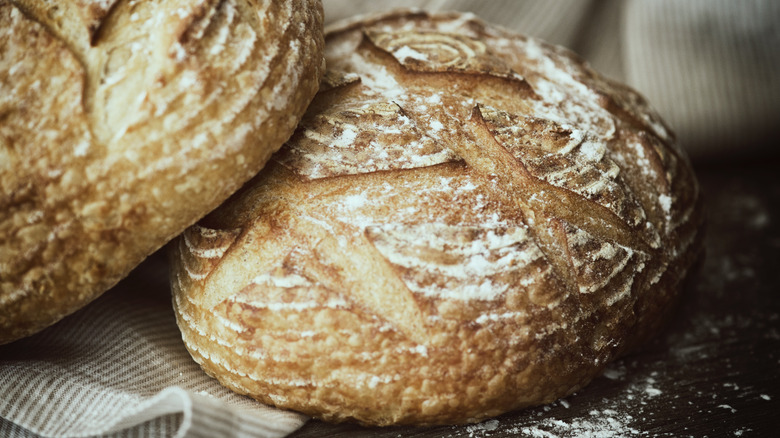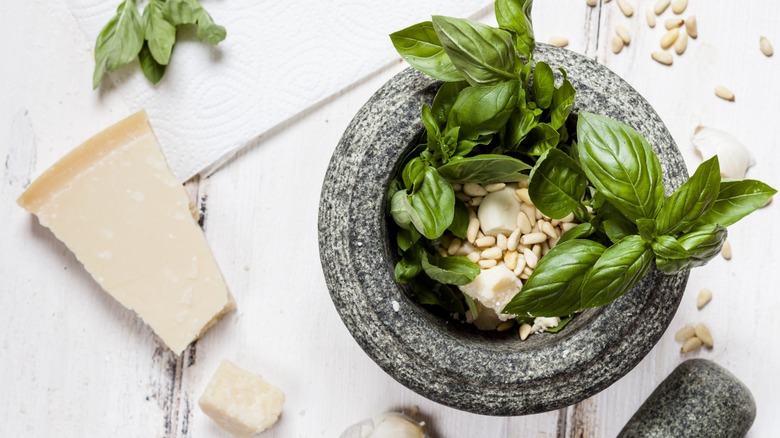Pesto Is The Savory Inclusion Your Sourdough Is Missing
Beyond plain homemade sourdough bread is a whole world of variations, from savory cheese to chocolate-laced sourdough. As a professional recipe developer for over 20 years, I have honed my bread making skills, and made the leap from yeast to sourdough over a decade ago. I have tried it all, and one of the things I have learned is that there is no need to limit flavor additions to a single taste when there are ingredients that have layers and layers of flavor all wrapped into one. Instead of choosing between herbs, cheese, or nuts, or struggling to fold in all the inclusions you want, consider adding one ingredient that can offer it all: pesto.
Fresh basil pesto is what most people think of first when they hear the word "pesto." At its most basic, pesto includes garlic, pine nuts, basil, oil, and Parmesan, all ground or crushed into a slightly creamy, bright green sauce. Because pesto is a saucy concoction — versus a dry ingredient — it can be more challenging to add to sourdough. The easiest way, and the way that infuses flavor throughout, is to add pesto to the dough during the mixing stage before the bread begins bulk fermentation (the first rise). For a pesto swirl, it can also be spread onto the dough during final shaping. Paint the stretched dough with pesto and then fold, roll, and shape the dough as you normally would, taking care not to tear the surface and have pesto leak out.
How does adding pesto change sourdough?
Adding pesto will impact your bread in more ways than just imparting a savory herby and cheesy taste. Classic sourdough bread is just flour, water, and salt. The lean dough, coupled with the gluten strength, makes the crust crisp and the interior soft and chewy, with large air holes. Adding oil changes both the interior and exterior of the bread, softening the crust and making the inside more tender with smaller pockets of air.
When fat coats flour, it inhibits gluten from developing. This is ideal for flaky pie crusts or biscuits, but not as much for sourdough, which needs the gluten development for a tall, well-risen loaf. The more oil you add, the softer the bread and the smaller air holes you will have. Making homemade pesto allows you to better control the amount of oil, play around with other herbs or nuts, and add as much or as little cheese as you like.
If using prepared pesto, pour off any floating oil, stir the pesto well, and then decide how much oil to mix back in. If adding the pesto as a swirl, err on the side of a drier pesto. Too much oil will prevent the bread from fusing back together once shaped and baked, instead creating interior layers more like a cinnamon roll. This is not right or wrong, but is definitely something the baker should keep in mind.

